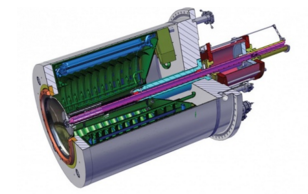The simulation team here at Empresarios Agrupados has been doing more work for the ITER experimental fusion reactor. Over this period of time, a prototype of the cryogenic distribution system in ITER (FEDCS) was developed. It includes the auxiliary cold box (ACB) of the cryogenic pumps, the distribution lines that carry the coolant from the ACB to the cold valve box (CVB), the CVB, including its control, and one of the cryogenic pumps of the torus. The final model, which will include all the cryogenic pumps, and has a twofold purpose:
- Verification of the ITER distribution system (FEDCS) that supplies coolant to the cryogenic pumps.
- Assistance in the development of the control system, providing information on the system dynamics.
The cryogenic pumps are used in high-vacuum applications and consist of an internal surface (cryogenic panels) cooled to low temperatures where the gases and vapors condense. The gas molecules are immobilized on these surfaces, thus reducing the pressure within the system. In the specific case of ITER, the cryogenic pumps serve two purposes: firstly, they are used downstream from the mechanical pumps to reduce the pressure in the vacuum vessel down to adequate pressure conditions and, secondly, they adsorb the gases from the plasma during reactor operation.

Because of the intrinsic difficulty involved in trapping helium particles, the surfaces need to be cooled to a very low temperature (4.5 K). In addition, every so often deuterium and tritium particles are adsorbed with the helium particles. Those particles will subsequently be recovered and treated in the tritium plant so they can be put back into the system. Therefore, the pumps operate in a constant cooling-pumping-heating cycle and are within a temperature range of between 4.5K during the pumping, and 470K during one of the regeneration scenarios.
The FEDCS control system has to operate the clients dynamically in such a way that they comply with the operating requirements of the plasma, taking the correct regeneration of the pumps into account at the same time. Having a dynamic model available has two main advantages: first, it can be used to verify the behavior of the FECDS elements that operate together and second, it can be used to design and verify the complex control system required for correct operation.